info / paper
Paper was invented in 3rd century BC in China. The oldest example of paper comes from Han Dynasty (180 – 50 BC), and was produced from hemp fibers. The first described method of paper production comes from 105 AD. Minister Cai (Ts’ai) Lun described the method of paper production from hemp fibers, rags and nets. These method consisted of reaping the paper from an aqueous suspension with a sieve.
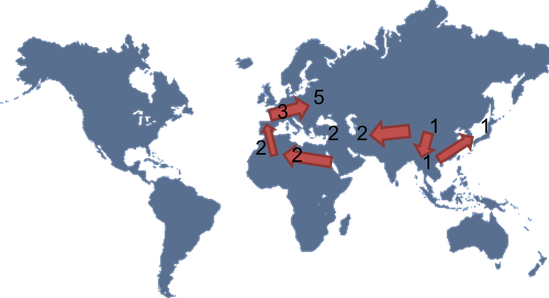
CALENDAR:
- 3rd BC China - Han Hsin
- 105 AD China - T’sai Lun
- 3rd AD Korea
- 6th AD Japan
- 8th AD The Arab Worldi
- 12th AD Europe
- 1799 - first paper machine ionvented by Frenchman Luis Robert
However, before the paper, there were other media such as papyrus and parchment in the Mediterranean and African countries, or Tapa, Hun and Amatl in America used.
Paper invented in China was made from cheap and available materials and its production was relatively quick and easy. It spread in the developing country both as a medium of information and as a means of payment.
Although the secrecy of paper production was closely guarded, in the 6th century AD paper appeared in Korea and in 7th in Japan. The Japanese in 8th century developed their own paper production called washi.
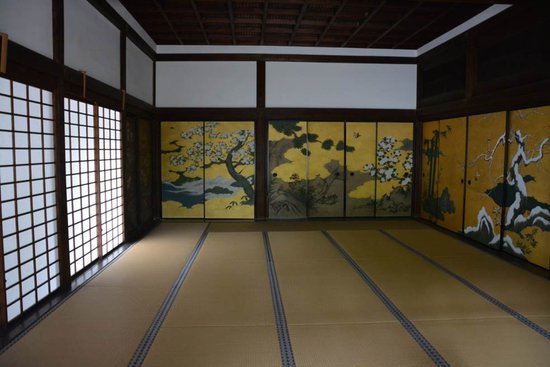 Sliding Japanese wall panels Shoji and Fusuma, Nazen-ji Temple, Kyoto, 15th C. Fot. J. Latka
Sliding Japanese wall panels Shoji and Fusuma, Nazen-ji Temple, Kyoto, 15th C. Fot. J. Latka
By the mid-eighteenth century, as a result of the Sino-Arab wars, the mystery of paper production got through to the Arab World. Then the second Arabian-Marian paper production era began. Paper production, like earlier in Asian countries, had allowed the flowering of Arabian culture and science that overcame the accomplishments of Europeans who used till the 10th century as an information carrier an expensive parchment. Although paper production reached Europe in the first half of the twelfth century, and paper itself was exported as a luxury commodity by the Arabs much earlier, it did not meet much interest and wasn’t trusted. Because of its low strength compared to parchment and Arab origin, it could not be used in official documents. The main use of paper was as documents in monastic and municipal offices, as well as for sacred purposes (prayer books, votive images, scriptures).
The breakthrough was the invention of movable printing by Johannes Gutenberg in 1446 and consequently the development of the book industry. Over the time, paper began to play an increasingly important role, in the form of books, documents, contracts, securities or packaging. At the end of the 17th century paper production was known throughout Europe. The Netherlands was the leading country in paper production.
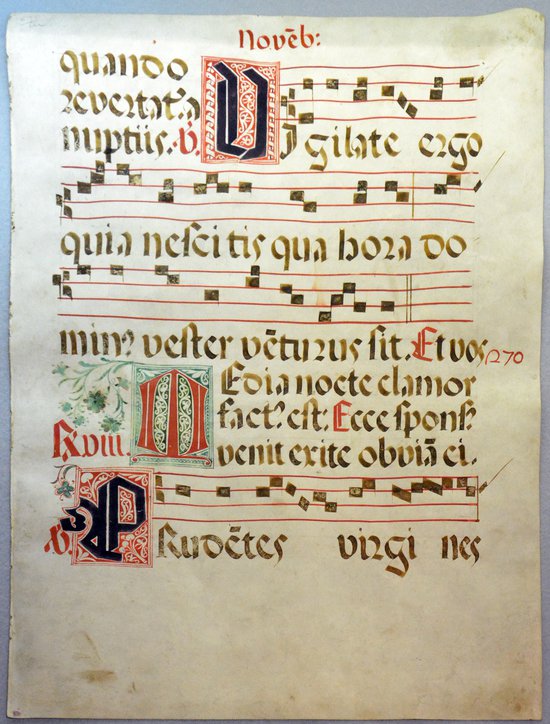 Prachment from 17th century. Fot. J.Latka – Paper Museum in Tokio
Prachment from 17th century. Fot. J.Latka – Paper Museum in Tokio
At the end of the 18th century, the paper industry got enriched with new mechanical devices that changed the paper production, from manual reaping to mechanical production of unrestricted length webs driven by steam engines. In the mid-nineteenth century, Friedrichi Gottlob Keller of Saxony discovered a new raw material - wood, which replaced the existing rags, hemp and linen waste.
Paper is a material of organic origin, the most common raw materials from which paper is produced are trees, both deciduous and coniferous. Other plant fibers may also be used for paper production, such as straw, hemp, cotton and other materials containing cellulose.
The paper production process can be divided into two stages. The first stage is the preparation of fibrous pulp. The second step is to process pulp in paper mills for paper webs.
Cellulose fibers are small elongated plant cells that form xylem tissue in the raw material - wood. In order to use cellulose for paper production, it is necessary to crush the xylem into individual fibers. Then by the use of fibers’ ability to create the bond between them during the watering, heating and pressing process a paper web is being produced.
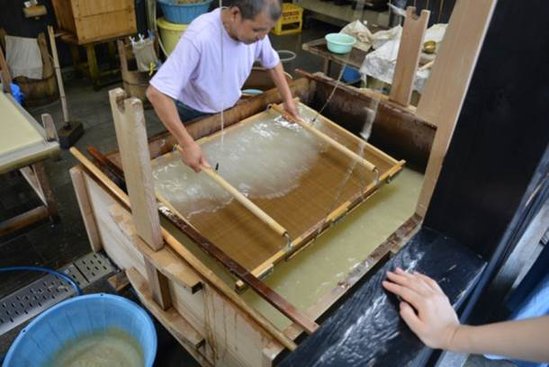 Traditional method of paper production, unchanged since 1500 years, used in the village of Echizen in Japan, fot. J. Latka
Traditional method of paper production, unchanged since 1500 years, used in the village of Echizen in Japan, fot. J. Latka
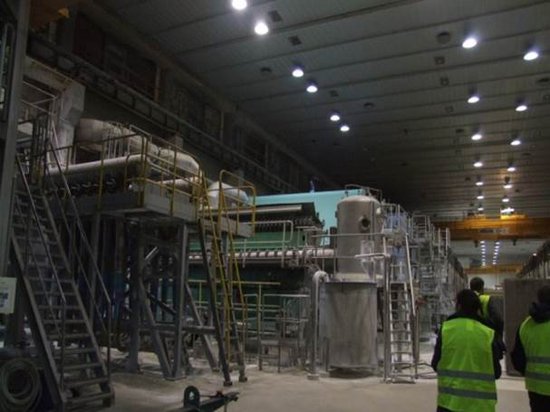 Modren methods of paper production Fot. J. Latka
Modren methods of paper production Fot. J. Latka
Paper is a widely available, easy to get, of natural-origin, low-cost, environmentally friendly and easy-to-recycle material.
Written in European culture since the 12th century, when he came to us from the Arab countries through the Iberian Peninsula, is a material found daily in many different variations and forms: packaging, booklets, breakfast paper, wallpaper, posters, playing cards, etc. The use of this "evolved wood" (as Shigeru Ban called paper) is relatively rare in the construction industry and almost not at all as an independent structural material in architecture.
The realized examples of paper-based architecture shows that paper is suitable for use in both temporary and permanent construction. The contemporary era of paper architecture was started by Japanese architect Shigeru Ban, Pritzker Prize winner in 2014 which is recognized as the equivalent of the Nobel Prize in Architecture.
By learning the structure of the paper, its chemical and physical composition, the properties and capabilities, we are able to design and manufacture building components out of paper that will be used as a structural material.
Universal access to the material, its low cost, pro-environmental performance, and physical properties make paper considered as a material of the future.